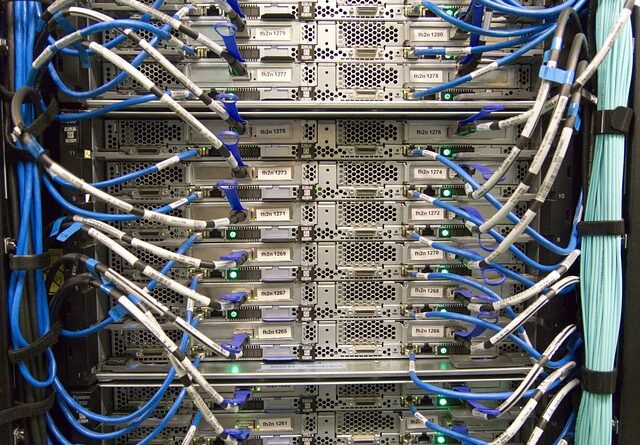Data Centre Emissions: More Than Meta, Microsoft, Google, and Apple Report
Data Centre Emissions: More Than Meta Microsoft Google and Apple Report. The global digital economy is powered by massive data centres, where information from every corner of the internet is stored, processed, and transmitted. These facilities serve as the backbone of cloud services, streaming platforms, and digital applications, making them indispensable in the modern age. However, data centres also carry an enormous environmental burden—far more than many of the largest tech companies publicly disclose. Recent reports suggest that data centre emissions could be over 660% higher than what industry leaders such as Meta (formerly Facebook), Microsoft, Google, and Apple are reporting.
This alarming revelation points to a significant underestimation of the environmental impact of the digital economy and calls into question the sustainability practices of major tech companies. In this article, we will explore the magnitude of data centre emissions, why they are so much higher than reported figures, and what this means for the future of the tech industry and environmental responsibility.
The Scope of Data Centre Emissions
Data centres are enormous facilities packed with servers, cooling systems, networking equipment, and storage units, all of which run continuously, consuming vast amounts of electricity. Their operations generate heat, which requires further energy-intensive cooling mechanisms. This combination of high electricity use and energy-intensive cooling contributes to significant greenhouse gas (GHG) emissions.
Globally, data centres are responsible for an estimated 1% to 1.5% of total electricity consumption and account for about 2% to 3% of global greenhouse gas emissions, roughly equivalent to the aviation industry. With the rapid growth of cloud computing, streaming services, artificial intelligence (AI), and the Internet of Things (IoT), the demand for data centres is projected to continue rising.
The rapid expansion of data centres has environmentalists concerned, especially as tech companies boast about their sustainability efforts and commitments to reducing carbon footprints. Leading companies like Meta, Microsoft, Google, and Apple have made bold claims about their sustainability initiatives, from transitioning to renewable energy to achieving carbon neutrality. However, the true scale of data centre emissions suggests that these companies may be underreporting their environmental impact, either due to methodological shortcomings or intentional omissions.
How Data Centre Emissions Are Calculated
To understand why the reported data centre emissions of tech giants are so much lower than the reality, we must first examine how emissions are typically calculated. Greenhouse gas emissions are divided into three main categories or “scopes”:
- Scope 1: Direct emissions from company-owned sources, such as fuel combustion in buildings or vehicles.
- Scope 2: Indirect emissions from the consumption of purchased electricity, steam, heating, or cooling.
- Scope 3: All other indirect emissions from a company’s value chain, such as those from the production and transportation of goods and services, business travel, and the energy used by external facilities, including data centres operated by third parties.
Tech companies primarily focus on Scope 1 and Scope 2 emissions in their sustainability reports. However, the emissions generated by the supply chain and external data centre providers, which fall under Scope 3, are often either excluded or underreported. As a result, the true environmental footprint of their data operations is obscured.
For example, many tech companies rely on third-party cloud providers or colocation data centres to manage and store their data. The emissions generated by these external data centres are not always included in the companies’ Scope 3 reports. Additionally, tech companies may emphasize their use of renewable energy in certain regions, while ignoring the significant emissions from facilities in regions where renewable energy is not available or is less reliable.
The “660%” Emissions Discrepancy
Recent investigations and environmental audits have revealed that data centre emissions could be over 660% higher than what companies like Meta, Microsoft, Google, and Apple report. This figure reflects the emissions that are overlooked or inadequately accounted for in Scope 3 calculations, especially from third-party data centres, hardware production, and infrastructure development.
There are several key reasons for this discrepancy:
- Opaque Reporting Practices: Many tech companies provide limited transparency in their sustainability reporting. For instance, they might only disclose emissions related to the data centres they directly own and operate, excluding third-party providers. This gives the impression that their carbon footprint is smaller than it actually is.
- Misleading Renewable Energy Claims: While companies like Google and Microsoft have committed to running their data centres on 100% renewable energy, the reality is often more complicated. In regions where renewable energy is not readily available, these companies purchase “renewable energy credits” (RECs) to offset their carbon emissions. While RECs help support renewable energy projects, they do not directly reduce the emissions produced by fossil-fuel-powered data centres in real time.
- Underreporting of Scope 3 Emissions: As mentioned earlier, Scope 3 emissions are notoriously difficult to track and quantify. For tech companies, this includes not only the emissions generated by external data centres but also the entire lifecycle of the servers, cooling equipment, and other hardware used in their operations. Many companies choose not to include these emissions in their reports, or they offer vague or incomplete data.
- Increasing Demand for Data: The digital economy is growing exponentially, and so is the demand for data storage and processing. From social media platforms like Meta to video streaming services powered by Google, the explosion of digital services has led to a massive increase in the number of data centres worldwide. Each of these facilities requires more power, and in many cases, renewable energy alone cannot keep pace with this demand.
- Cooling Systems: Data centres consume enormous amounts of energy not only to power their servers but also to cool them. Cooling systems often rely on traditional energy sources, adding to the overall emissions. Although some companies have invested in innovative cooling technologies, such as using natural air or water-based cooling systems, these solutions are not yet widespread, and many data centres continue to rely on energy-intensive cooling methods.

Why the Tech Giants’ Sustainability Claims Are Under Scrutiny
The world’s largest tech companies—Meta, Microsoft, Google, and Apple—have made bold claims about their efforts to combat climate change. These companies have committed to ambitious goals, such as achieving carbon neutrality or operating on 100% renewable energy within the next decade. However, the revelation that their data centre emissions could be over 660% higher than reported casts doubt on the sincerity and effectiveness of these sustainability efforts.
1. Google
Google has long been a leader in promoting renewable energy in its data centres. The company has claimed that it has been purchasing enough renewable energy to match 100% of its global energy consumption since 2017. However, this does not mean that all of Google’s data centres are directly powered by renewable energy at all times. Instead, Google relies on purchasing renewable energy credits (RECs) to offset the emissions generated by fossil fuel-based electricity in regions where renewable energy is not available.
In reality, many of Google’s data centres still operate in areas where coal or natural gas is the primary energy source. This means that Google’s actual emissions from data centres are likely higher than the company reports. The practice of buying RECs, while beneficial in the long term, does not negate the short-term impact of running data centres on fossil fuels.
2. Microsoft
Microsoft has set a goal to be carbon negative by 2030, meaning that it plans to remove more carbon from the atmosphere than it emits. Part of this strategy involves making its data centres more energy-efficient and using renewable energy sources. However, like Google, Microsoft’s reliance on RECs and carbon offsets raises questions about the true impact of its sustainability efforts.
Microsoft’s cloud computing platform, Azure, is one of the largest in the world, and its data centres are responsible for significant emissions. While the company has made strides in energy efficiency, the rapid growth of cloud services means that Microsoft’s data centre emissions may still be far higher than reported.
3. Meta
Meta, the parent company of Facebook, Instagram, and WhatsApp, has also made commitments to reducing its carbon footprint. In 2020, Meta announced that it had achieved net-zero emissions for its global operations, primarily by investing in renewable energy projects and carbon offsets.
However, like other tech giants, Meta’s data centre emissions may be underreported, especially when considering the emissions generated by third-party providers and the production of hardware. With billions of users across its platforms, Meta’s data processing needs are enormous, and its reliance on energy-intensive data centres likely contributes more to global emissions than the company acknowledges.
4. Apple
Apple has been a leader in environmental initiatives, often touting its use of renewable energy and its commitment to reducing carbon emissions across its supply chain. The company claims that its global corporate operations, including data centres, have been powered by 100% renewable energy since 2018. Apple also aims to make its entire supply chain carbon neutral by 2030.
However, Apple’s data centre emissions, particularly from third-party providers and external infrastructure, may not be fully accounted for in its reports. Additionally, Apple’s heavy reliance on hardware production, including servers and other equipment used in its data centres, contributes to a significant amount of Scope 3 emissions that may be overlooked.
The Future of Data Centre Sustainability
The revelation that data centre emissions could be 660% higher than reported underscores the urgent need for greater transparency and accountability in tech companies’ sustainability practices. If the tech industry is to truly address its environmental impact, several key changes must occur:
1. Accurate Reporting and Transparency
Tech companies must improve the transparency of their sustainability reports, especially when it comes to Scope 3 emissions. This includes accurately reporting the emissions generated by third-party data centres, hardware production, and infrastructure development. By providing a more comprehensive view of their carbon footprint, companies can better understand the scale of their environmental impact and
take meaningful action to reduce it.
2. Investment in Renewable Energy
While many tech companies have invested in renewable energy, there is still much work to be done to ensure that data centres are consistently powered by clean energy sources. This will require not only further investment in renewable energy projects but also improvements in energy storage and grid management to ensure that renewable energy is available around the clock.
3. Energy Efficiency and Innovative Cooling Solutions
Improving the energy efficiency of data centres is crucial to reducing their environmental impact. This includes using more efficient servers, optimizing software to reduce energy consumption, and adopting innovative cooling solutions that rely on natural air or water-based cooling systems.
4. Collaboration and Industry Standards
The tech industry must work together to establish common standards for sustainability reporting and emissions reduction. By collaborating on best practices and sharing knowledge, companies can make more significant progress toward reducing the environmental impact of data centres.
Data Centre Emissions: More Than Meta, Microsoft, Google, and Apple Report. Data centres are the lifeblood of the digital economy, but they come with a significant environmental cost. The revelation that data centre emissions may be over 660% higher than reported by tech giants like Meta, Microsoft, Google, and Apple highlights the urgent need for greater transparency and accountability in sustainability practices. As the demand for data continues to grow, it is critical that the tech industry takes bold steps to reduce its carbon footprint, improve energy efficiency, and invest in renewable energy. Without meaningful action, the environmental impact of data centres will only continue to escalate, posing a serious threat to global efforts to combat climate change.

